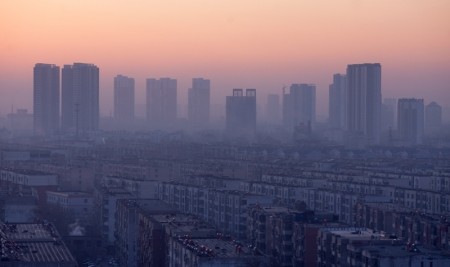By Anders Hove

Will 2015 be a turning point in China’s war on air pollution? The U.S.-China Climate Change Accord, announced in mid-November, set off fireworks in China’s environmental community. Institute Chairman Hank Paulson hailed it as the first specific commitment the country has made to capping absolute carbon emissions. Given that many analysts had expected China’s emissions—the highest in the world—to grow rapidly for decades, the commitment to cap emissions by 2030 was a huge deal, capping off a year of significant progress on climate change policies in China.
China is actively working on policies that could also cap coal consumption—the largest contributor to China’s particulate and greenhouse gas emissions. China’s seven carbon pilot trading zones, are up and running, establishing a record of trading volume and stable prices. The zones have also highlighted major shortcomings, such as unclear baselines and emissions reductions targets, which need to be clarified before China can take trading national by 2016.
On the legal front, China is working on a new air law, which should go into effect next year, tightening emissions standards for power plants and industry while raising penalties for non-compliance with environmental regulations. China’s new air pollution law will signal whether the government’s new enforcement powers are strong enough to force large state-owned enterprises to meet existing pollution standards and new emission targets. One positive step: in 2014 the government announced that officials’ salaries and promotions will be delinked from GDP, with more emphasis placed on environmental performance. But how the government will implement key performance indicators for officials, especially in industrial provinces like Hebei, remains unclear. Will officials be adequately rewarded for prioritizing environmental protection? If not, will they push back and evade declared plans to scale down coal consumption, steel and cement overcapacity, and other structural economic issues?
In the meantime, it is becoming harder for polluters to hide. Chinese NGO Institute of Public and Environmental Affairs (IPE) launched a “who’s polluting?” function on a new cell phone app, a potential game-changer in helping the public and officials monitor polluters. IPE’s app and quarterly reports have vividly demonstrated how steel and power state-owned enterprises regularly and flagrantly violate emissions standards, including in the most recent quarter of 2014.
The big question in 2015 will be whether the United States and China can work together to turn voluntary climate commitments into coordinated global action. The recent U.S.-China pact has raised hope that others may follow their lead: The Philippines, for example, recently broke ranks with its developing-economy negotiating group and agreed to cap carbon emissions. Ahead of the United Nations Climate Change Conference in Paris at the end of 2015, it’s hard to say how many other countries will follow suit. But now that China has agreed to cap emissions, it may be harder for other countries to play the “developing country” card.
Anders Hove is Associate Director for China Research at the Paulson Institute.


